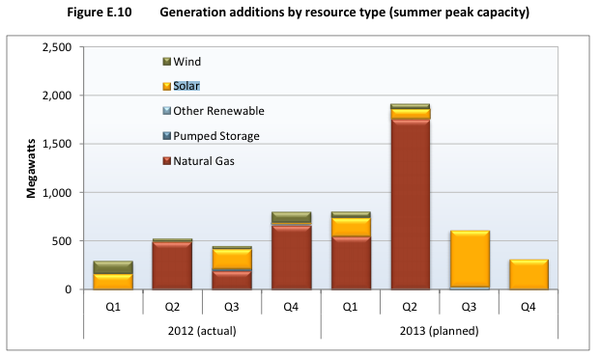California's New Energy Plants To Be More Sunny, Less Gassy

Of new energy generating capacity slated to come online in the second half of 2013 in California, the overwhelming majority is solar. That's 1,581 megawatts -- or 97 percent -- of the 1,633 planned for the last two quarters of the year. (And these solar figures don't include "behind the meter" rooftop solar.) The remaining will made up by another renewable source: biomass.
That's quite a difference from what's happening in the first half of the year, when 2,000 megawatts of gas-fired plants are expected to come online.
This is all according to what CaISO, the state's grid operator, forecasted in a report released in April: Solar and other renewables are likely going to dominate the field of new power generating capacity in California from here on out.
In the coming years, the ISO anticipates construction of several thousand megawatts of new nameplate renewable generation to meet the state's 33 percent renewable goals. While over 1,300 MW of gas generation came online in 2012 and over 2,000 MW is anticipated in 2013, much of the generation expected going forward will be renewable. As more renewable generation comes online, the ISO has highlighted the need to backup and balance renewable generation with the flexibility of conventional generation resources to maintain reliability.
Translation: "we'll still need gas to make sure we have power when it's cloudy, but maybe not so much."
The forecast for the new power mix added in the second half of 2013 is just that: a forecast, not a snapshot. But as reporter Herman Trabish points out on the Energy Collective website, CaISO analyzed which of the projects in the queue had the highest likelihood of actually coming online, so it's at least a well-educated guess.
One additional factor may mean fewer new gas-fired plants are coming online. CaISO suggests that falling gas prices may mean lower potential revenues for power plant operators, meaning that fewer companies will be willing to shell out the cash to build new plants.


